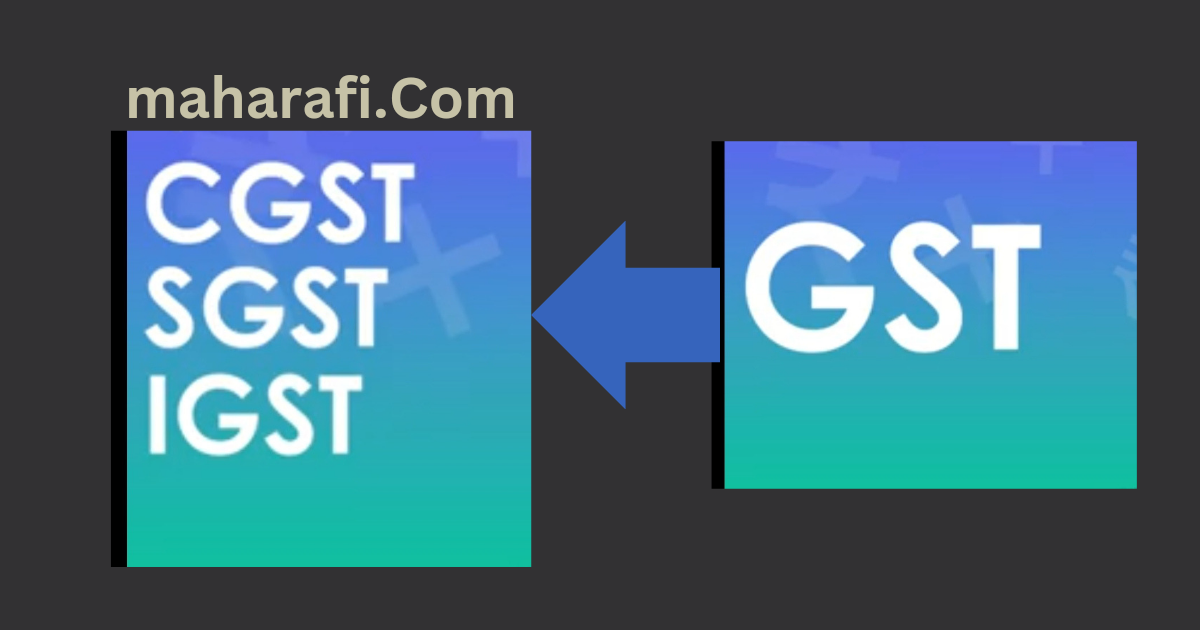In this article we discuss about types of GST and first we know about the Goods and Services Tax (GST) Act was passed in the Indian Parliament on March 29, 2017, and later implemented on July 1, 2017. It was seen as a significant improvement for the country, replacing existing indirect taxes such as excise duty, VAT, service tax, etc., with a more organized perspective.
What is GST?
Goods and Services Tax (GST) is a value-added tax imposed on the supply of goods and services for domestic consumption. GST is a comprehensive, uniform indirect tax law for the entire country.
This tax is included in the final bill of any product. When a consumer purchases a product, they pay for the price including GST. The business or seller then sends their share of GST to the government.
The Central Government of India levies this tax. In the case of inter-state transactions, the tax is distributed between the Central and State governments under CGST (Central Goods and Services Tax) and SGST (State Goods and Services Tax).
Benefits of GST/ What is GST and its benefits?
- Elimination of Multiple Tax Systems: GST replaces various tax systems.
- Increased Compliance for Businesses: Enhances compliance for businesses.
- Reduced Prices: Aims to lower prices.
- Boost to Overall Revenue: Contributes to increased overall government revenue.
- Enhanced Efficiency and Productivity: Promotes increased efficiency and productivity.
Types Of GST / What are the 3 types of GST?

There are Four Types of GST in India
- IGST – Integrated Goods and Services Tax
- SGST – State Goods and Services Tax
- CGST – Central Goods and Services Tax
- UTGST – Union Territory Goods and Services Tax
What are the types of GST and use?
IGST – Integrated Goods and Services Tax
The Integrated Goods and Services Tax, or IGST, is a tax under the Goods and Services Tax (GST) system that applies to the inter-state (between two states) supply of goods and/or services, as well as imports and exports.
IGST is governed by the IGST Act. The responsibility for collecting the tax under IGST lies with the central government, which is responsible for consolidating the tax after collection and then distributing it among the respective states. For instance, if a business in West Bengal sells goods worth Rs. 5,000 to a customer in Karnataka, IGST would apply since it involves an inter-state transaction. If the applicable GST rate is 18%, the business would charge Rs. 5,900 for the goods, and the collected IGST of Rs. 900 would go to the central government.
SGST – State Goods and Services Tax
The State Goods and Services Tax, or SGST, is a tax under the GST system that applies to intra-state (within the same state) transactions of goods and/or services. In cases of inter-state supply of goods and services, both State GST and Central GST are levied.
SGST is governed by the SGST Act. SGST is applied to goods and/or services bought or sold within the boundaries of a state. The revenue generated through SGST is entirely claimed by the respective state government.
For example, if a business in West Bengal sells goods worth Rs. 5,000 to a customer within the state, the applicable GST would be divided between CGST and SGST. If the GST rate is 18%, it would be divided as 9% CGST and 9% SGST. In this case, the total amount collected from the business would be Rs. 5,900, with the SGST of Rs. 450 going to the West Bengal state government.
These GST provisions ensure a systematic tax structure for both inter-state and intra-state transactions, contributing to a unified tax regime in India.
CGST – Central Goods and Services Tax
Central Goods and Services Tax is a type of GST that, like State GST, is a tax under the GST regime applied to interstate (within the same state) transactions. CGST is governed by the CGST Act, and the revenue generated from CGST is collected by the Central Government.
As illustrated in the example above, if a business owner in West Bengal sells goods worth Rs. 5,000 to a customer within West Bengal, GST is applicable on the transaction—partly as CGST and partly as State GST. If the GST rate is 18%, it will be divided equally as 9% CGST and 9% State GST. In this case, the total amount collected from the customer will be Rs. 5,900. Out of the revenue generated from GST, Rs. 450 will go to the Central Government as CGST.
UTGST – Union Territory Goods and Services Tax
Union Territory Goods and Services Tax (UTGST) is the equivalent of Central Goods and Services Tax (CGST) but applied to the supply of goods and/or services within the Union Territories (UTs) of India.
UTGST is applicable in the Union Territories of Andaman and Nicobar Islands, Chandigarh, Daman and Diu, Dadra and Nagar Haveli, and Lakshadweep for the supply of goods and services. UTGST is governed by the UTGST Act, and the tax earned from UTGST is collected by the Union Territory Government. UTGST replaces State Goods and Services Tax in Union Territories, therefore, in addition to CGST, UTGST will be exempted in Union Territories.
Read more:
New Pradhan Mantri Suraksha Bima yojana get Insured up to 2 Lakhs
